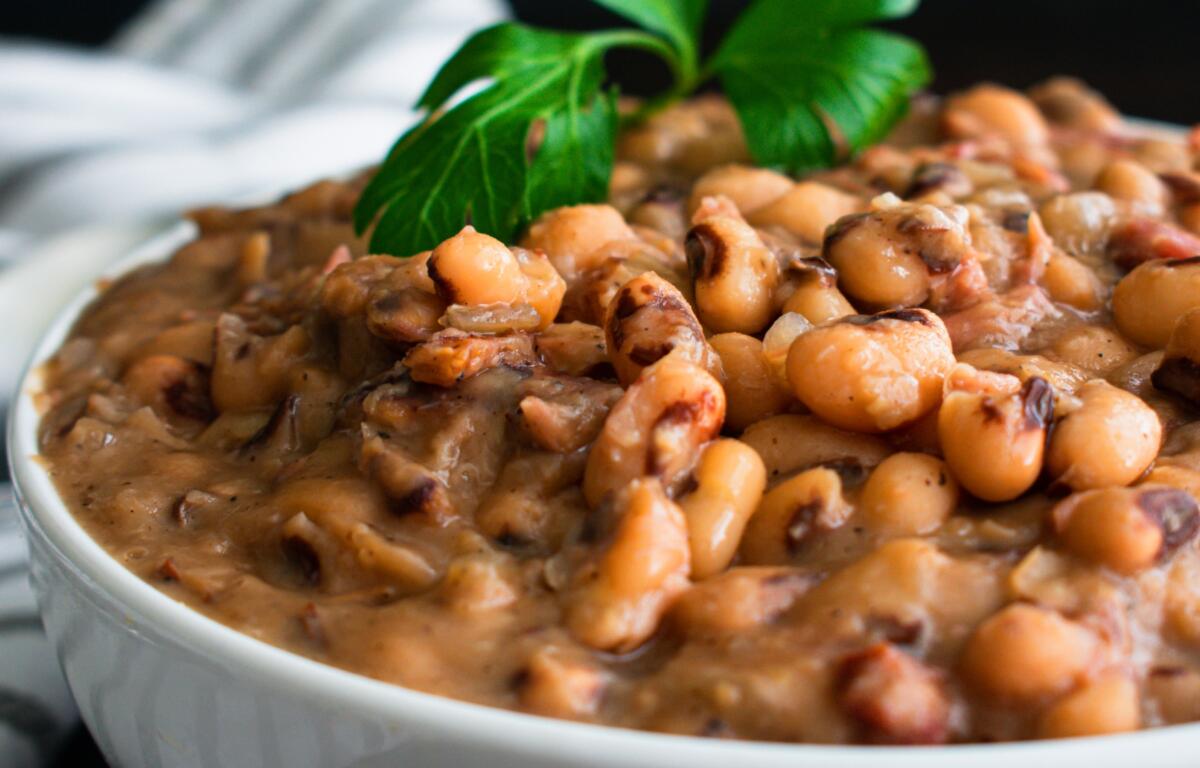ASHEVILLE, N.C. (828newsNOW) — New Year’s Day traditions often include eating special foods that symbolize good luck, prosperity and health in the coming year. Popular foods vary by region and culture, but here are some of the most common items enjoyed around the world:
1. Black-Eyed Peas (Southern U.S., parts of Africa)
- Symbolism: Good luck and prosperity.
- Popular dish: Hoppin’ John (a dish made with black-eyed peas, rice, pork and seasoning) is commonly eaten in the Southern U.S. for good fortune.
2. Pork (Various countries)
- Symbolism: Progress and prosperity (pigs root forward, symbolizing advancement).
- Common dishes: Pork roast or sauerbraten (in Germany), lechón or roast pig (many Latin American countries and the Philippines) and pork and sauerkraut (in Germany and parts of the U.S.).
3. Collard greens (U.S. particularly in the Southern states)
- Symbolism: The tradition is often linked to the belief that eating collard greens on New Year’s Day brings good luck and prosperity for the coming year. The greens are said to resemble money, symbolizing wealth.
4. Lentils (Italy, Brazil)
- Symbolism: Wealth and prosperity (lentils resemble coins).
- Dishes: Lentil soup or lentil stew is a common food in Italy and Brazil on New Year’s Day.
5. Fish (Various cultures)
- Symbolism: Abundance and fertility, as fish swim in schools and multiply.
- Common dishes: Fish dishes like salmon, herring or cod are enjoyed in many countries, including Scandinavia and Japan.
6. Noodles (Japan, China)
- Symbolism: Longevity.
- Dishes: In Japan, long noodles like soba or toshikoshi soba are eaten for a long, prosperous life. In China, long noodles symbolize longevity and are often part of celebratory meals.
7. Grapes (Spain, Latin America)
- Symbolism: Good luck in the coming year.
- Tradition: In Spain and other parts of Europe and Latin America, it’s customary to eat 12 grapes at the stroke of midnight — one for each month of the year.
8. Cabbage (Germany, Eastern Europe)
- Symbolism: Money, as cabbage leaves resemble green currency.
- Common dish: Sauerkraut or cabbage rolls are popular in many countries like Germany, Poland and Hungary.
9. Cornbread (Southern U.S.)
- Symbolism: Prosperity (golden color resembling wealth).
- Common dish: Cornbread, often served alongside black-eyed peas or other traditional Southern dishes.
10. Baked Goods (Various)
- Symbolism: Good fortune and blessings.
- Common items: In many countries, special cakes or pastries are baked, such as King Cake (in the U.S. South) or New Year’s Day bread in parts of Europe.
These foods, often consumed as part of family gatherings or special meals, reflect hopes for a healthy, prosperous and joyful year ahead.


